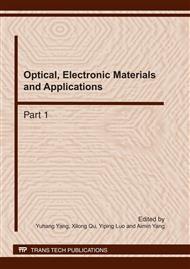p.111
p.116
p.120
p.124
p.128
p.134
p.138
p.143
p.148
Thermal Performances Analysis of Microelectronic Chip Cooling System with Thermoelectric Components
Abstract:
The microelectronic chip thermoelectric cooling equipment and its test system have been developed for the deficiency of the conventional cooling technologies in this paper. The thermal resistance analysis model was applied in research the heat transfer process of the microelectronic chip cooling system and its characteristics. The results show that: When the thermoelectric cooling (TEC) system is in normal operating condition,the Peltier effect is the dominant role in the thermoelectric cooling process despite the opposite actions of the Joule and Fourier effects. The thermal resistance of TEC, which is Q2, decreases when the operating current (I) increases. For the different chip power, there is an optimum current (Iopt) making the interface thermal resistance between chip and TEC minimum (Q1). Q1can obtain the minimum 0.465°C·W-1 when the chip power is 25W and Iopt is 2.4A. The total thermal resistance (Qtotal) firstly decreases and then increases with the increase of operating current. There is an optimum current which allows the total thermal resistance is smallest. Qtotal may obtain the minimum value 0.672°C·W-1 when the chip power is 25W and Iopt is 2.4A. Furthermore, Qtotal Iopt both increase by the chip power.
Info:
Periodical:
Pages:
128-133
Citation:
Online since:
March 2011
Authors:
Price:
Сopyright:
© 2011 Trans Tech Publications Ltd. All Rights Reserved
Share:
Citation:


